Are large calibers omnipotent?
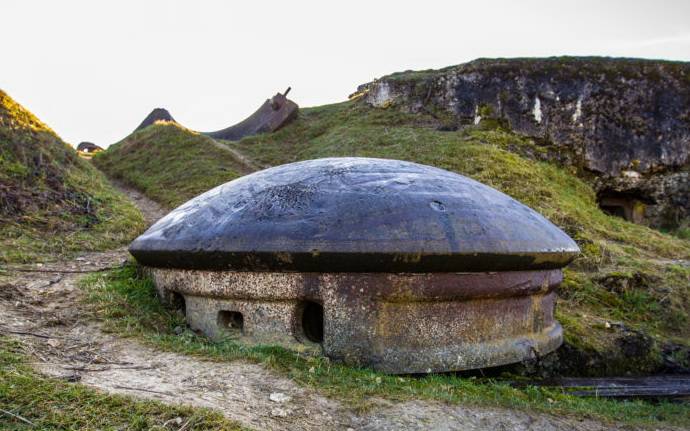
General observations on projectiles of all three calibers
Blast and shake action
The explosion of the large shells discussed above was extremely strong.
In contrast to what is taking place in the open air, an explosion of these shells in a confined space, for example, in underground galleries of fortifications, formed an air wave propagating over a very long distance.
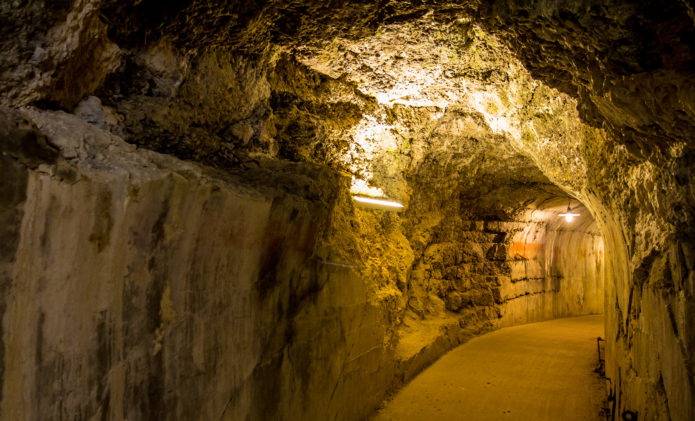
Indeed, the gases, expanding depending on the resistance of the walls, instantly filled all the available galleries and paths, and, penetrating into all adjacent rooms, produced various mechanical actions.
Thus, in one fort, an air wave from an explosion of an 420-mm projectile penetrated underground rooms through a staircase, tearing several doors along the way (one of them was thrown back to 8 meters). Having walked about 70 meters, this wave was still felt quite strongly, pushing people apart and squeezing them in the door - despite the fact that 7 had successive turns (of which 5 was at right angles) and many open messages with outside air (through windows and doors).
In one gallery, a wave made everything that was in the room: beds, earthen bags, tours, etc., made of all this a peculiar kind of carriage at the very end of the gallery, and carried 2's people there.
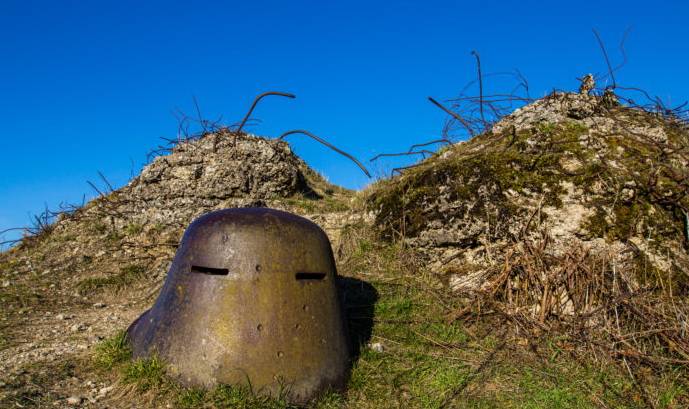
One telegraph post had an entrance in a long gallery located very far from the site of the explosion. But the airwave ripped out the door, pushing it flat against a wall and crushing a man trapped by it along the way.
The tremors, which were carried out by the blow and the explosion of these shells, were strongly felt by the defenders, even placed in underground galleries. Strongly shook the whole mass of the fort; sometimes, in some premises that did not hit the shells, rather deep frustrations - as was the case in the entrance corridor of the 75-mm tower - the discrepancy between the plates and the supporting walls and less important cracks.
Sometimes these bundles appeared in the supporting walls associated with the slab, slightly below the slab.
The impact of projectiles impact was much less reflected on large masses of concrete than on small ones: delamination and cracks were more noticeable, for example, on connecting galleries and there they increased faster from impacts than on parts of concrete barracks. Thus, large arrays resisted not only because of their large thickness, but also due to their large mass.
In order to resist this deep shock, the foundations of the structures had to be very well installed and sufficiently deep, especially where an explosion under a wall or under the floor of a room could cause serious damage.
Undoubtedly, such a shaking caused landslides in two corridors of underground shelters of one of the forts, which occurred at different times, but in similar conditions. These corridors were pierced on 8 - 9 meters below ground level, in very dense marl mixed with limestone, and had brick support walls 0,65 m thick and 2,5 meter high in height and the same vaults 0,34 meter thick. Due to the impact and explosion of one 420-mm projectile (which gave a funnel about 10 meters in diameter and 5 meters in depth in a similar ground) the corresponding part of the arch was destroyed by “deep compression of the ground”: the ground around 3 meters was pressed under the vault and the corridor turned out to be littered with pieces of marl and stones.
It is clear, therefore, how important it is that the overlaps of deep galleries - even those pierced in the rock - should be well packed and have strong supports.
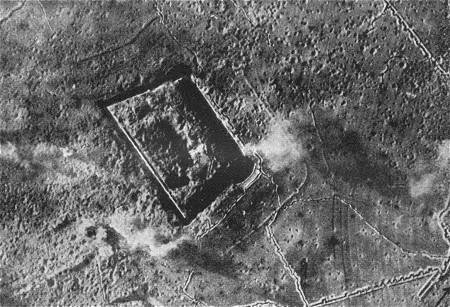
Action of gases
During the short-term bombardment, the garrison did not suffer from the action of high-explosive gas bombs, unless the bombs exploded in the premises occupied by the troops. A bomb that explodes in a residential area suffocates people with its poisonous gases, especially with poor ventilation.
During prolonged bombardments, ventilation is also necessary for underground shelters organized in mine galleries, since poisonous gases that penetrate deep into the soil could penetrate into these shelters due to their greater density, even through cracks in the rock.
Shelter overlap required the presence of a sufficiently thick slab about which the projectile would explode, from the 1 - 1,5 interlayer of a meter of sand and of the slab itself, which, depending on the importance of the structure, must be at least 2 meters thick.
The number of shells fired on the fortsIt was very different.
In 1915, 60 420-mm caliber shells fell on one of the forts and in its immediate vicinity, and by August 1916 had received about 30 such shells, about a hundred 305-mm bombs and a significant number of smaller caliber shells.
Another fort from February 26 to 10 July 1916 received 330 bombs 420-mm caliber and 4940 bombs of other calibers.
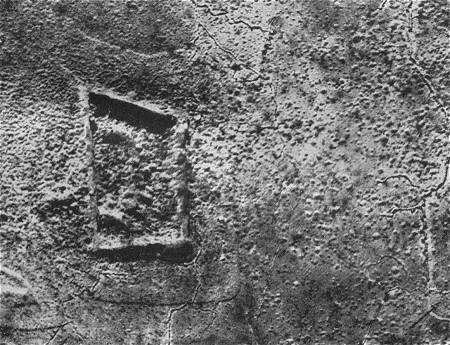
Another fort received 15000 bombs in just one day, and in the second for two months (from April 21 to June 22) about 33000 shells of various calibers fell. The third fort from 26 February to 11 April 1916 received 2460 shells of various calibers, including 250 bombs 420-mm caliber.
Resistance of forts to bombardment
If the forts were subjected only to medium bombardment (with shells of no more than 380-mm caliber), then their elements, which were not directly affected by the bombs, remained intact, as we will see below. Networks were damaged more or less severely, but still were some obstacle for the enemy.
Scarp and counter-escarp were partly destroyed, but the ditches could be fired from coffres and caponiers quite easily.
If the bombardment is more intense, and the shells reached 420-mm caliber, the networks were completely or partially destroyed. The ditches turned out to be more or less overwhelmed with debris from escarpes and counter-escarpes, so that the flanking could become quite difficult. The earthen embankments were completely destroyed, and the signs of the parapet around the parapet disappeared. However, it was possible to use the edge of the craters, which covered the parapet and parapet, to accommodate infantry and machine-gunners.
It is no longer possible to rely on non-concrete shelters. Some concrete structures also failed. The galleries leading to the counter-escarpment coffers were often overwhelmed, and a very important circumstance for further resistance was the supply of enough people in the trunks with enough ammunition, hand grenades, supplies and water.
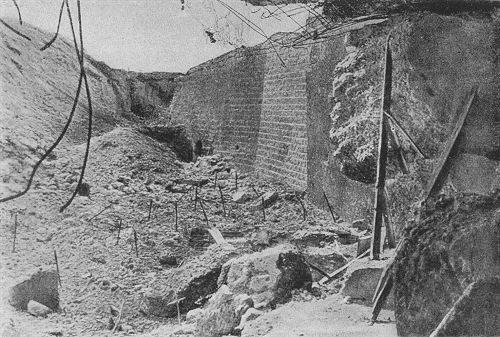
The most important concrete structures, which had a large mass, suffered, in general, little. This fact is established by the example of large concrete barracks, reinforced concrete massifs surrounding the towers and other equivalent structures at all the forts of the Verdun fortress. So, despite hitting more than 40000 bombs of various calibers in the fort, the old powder magazine (which, after amplification, was of type 2) was still in good condition and was quite suitable for accommodating people.
Gun turrets until August, 1916 resisted large projectiles perfectly, and if the operation of some towers ceased due to the hit of projectiles, these towers could always be returned to the system in a short time.
Even after the strongest bombardments of the Verdun Fortifications, the concrete forts retained their value and, in particular, their active qualities.
During the six-month struggle in February - August 1916, between concrete and artillery, long-term fortifications - even the least solid ones - showed tremendous resistance to powerful modern projectiles.
The action of shells of very large caliber on the tower
According to the testimony of the defenders of Verdun, armor turret "resisted well."
Examples.
1) "Towers for 155-mm and 75-mm cannons in the above-mentioned fort (which from February 26 to 11 in April 1916 received 2460 shells, including 250-420-mm) are still shooting every day."
2) Although 26 February 1916, the enemy especially specifically directed his fire on them, and several times extremely methodically shot at them, not a single projectile hit the domes of the towers, but three 420-mm bombs hit the 155-mm tower’s concrete avant-bone. . An array of reinforced concrete surrounding the armor cracked, and the tangled bunches of iron reinforcement from the concrete were exposed. Despite this, the tower acted well, and slight jamming was present only in certain positions.
One earlier fact also confirms these guidelines.
In February, 1915 X. 420-mm projectile landed in a reinforced concrete array surrounding the armor of the 155-mm turret, and refused. The hit point is an 1,5 meter from the outer circumference of the avanicrase. The shell bounced off and fell close - into the courtyard of the fort.
On a circular surface (with a diameter of up to 1,5 meters), a whole forest of tangled reinforcement rose; the concrete was damaged, but not crushed. The tower was wedged, but it, in general, was not damaged.
During 24 hours it was possible to repair and re-enter it.
So, forts, fortifications, armored batteries and other strongholds of Verdun, which the defenders had to keep in their hands, by all means, even in a dilapidated form, served as safe havens for the defenders of the fortress and facilitated the repulse of German attacks.
The powerful modern artillery was not able to make these structures unsuitable for defense.
Of course, the results of this unprecedented struggle depended to a large extent on the success of the actions of the French artillery, which did not allow German guns to smash the fortress with impunity. However, the effects of the bombing were weakened by the following circumstances.
1) The relative bursting charge in the German bombs was, on the whole, small, as can be seen from the tablet below; even for a 420-mm howitzer, a septum bomb was initially adopted, containing only 11,4% explosive. Later, they became convinced of the uselessness of this partition and introduced a new projectile weighing 795 kg, containing 137 kg (17,2%) of the explosive. French sources do not note the difference in the action of these two types of projectiles, - which were undoubtedly used for the bombardment of Verdun, since the introduction of new projectiles is marked by documents relating to this period.
V. Rdultovsky determines for each projectile the approximate volumes of the craters by the average of the sizes given in the text and, by dividing the volume of the crater by the weight of the explosive, calculates the amount of earth emitted by the unit of weight of this charge - in cubic meters. meters on 1 kg and in cubic meters feet on 1 Russian pound - as was customary in the Russian artillery. To calculate the volume of the craters, he uses the following empirical formula
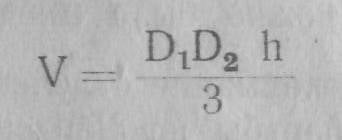 derived on the basis of measurements of a large number of funnels in different soils, where D1 and D2 are the largest and smallest diameters of the funnel, h is its depth, V is the volume. In this case, D1 = D2.
derived on the basis of measurements of a large number of funnels in different soils, where D1 and D2 are the largest and smallest diameters of the funnel, h is its depth, V is the volume. In this case, D1 = D2.At the end of the table are information about the projectile to the 370-mm French mortar syst. Filloux, in its ballistic data similar to German 305-mm mortars; the relative charge in this bomb was three times greater than in similar German shells.
Judging by the data in this table, it can be considered that the slowdown in the operation of the 420-mm bombs detonator was well chosen; their sensitivity was insufficient - as they gave quite a lot of failures.
380-mm projectiles, on average, gave satisfactory funnels, but often the volume of the funnels did not exceed the 12 cube. meters These projectiles had detonators without delay and acted on earthen mounds not uniformly; and when hit in concrete structures exploded almost at the moment of impact; even when they entered civilian houses, they only destroyed the upper floors. Therefore, we can assume that their enormous strength (the initial speed reached 940 meters per second) and the large bursting charge were not adequately used.
The explosive charge in 305-mm bombs, in a relatively large number of French positions used in the shelling, was obviously insufficient.
2) The number of the largest shells hit the forts turned out to be less significant than could have been supposed.
3) The fact noted by the French is noteworthy: during the six-month struggle in the Verdun positions there was not a single hit of large projectiles in the domes or in the ring armor of the gun turrets, although the Germans repeatedly and methodologically conducted fire on the latter. It is understandable that the towers, under this condition, withstood the bombardment of "good."
But carefully organized experiments showed that the towers of the same types as those installed in the French fortresses suffered greatly from hitting the dome or even 280-mm projectiles in the ring armor. Thus, the noted successful resistance of the towers should be largely attributed not to the strength of their design, but to the difficulty of getting, in combat conditions, to their most vulnerable parts.
It is possible that the results of the bombing would have been different if more 420-mm bombs had been used, and the disadvantages noted above were eliminated.
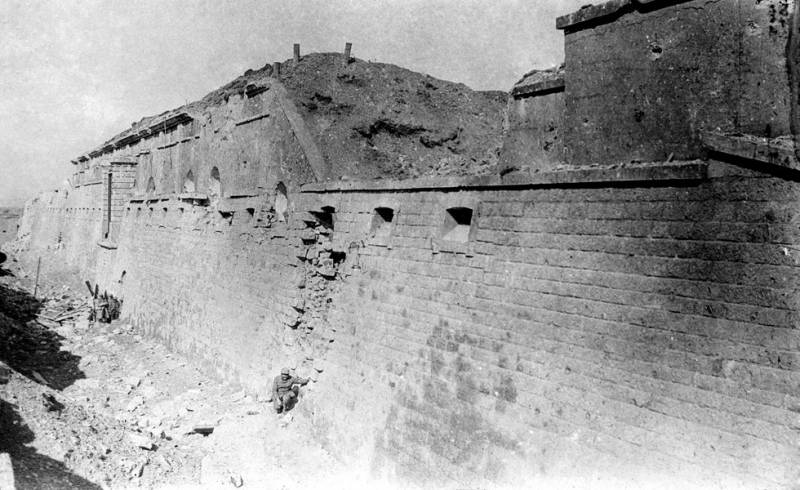
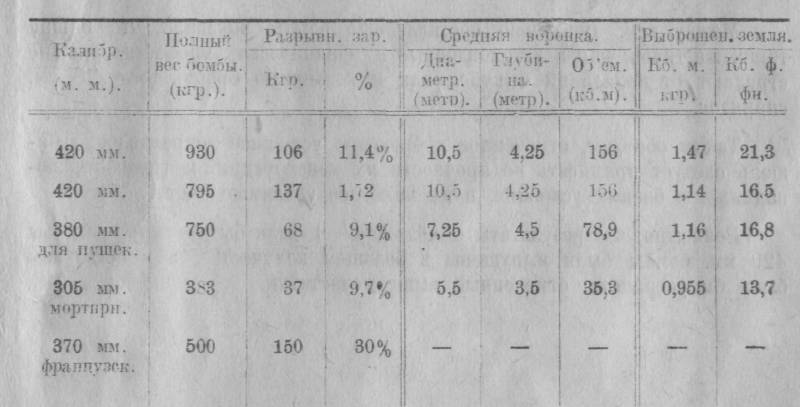
Information